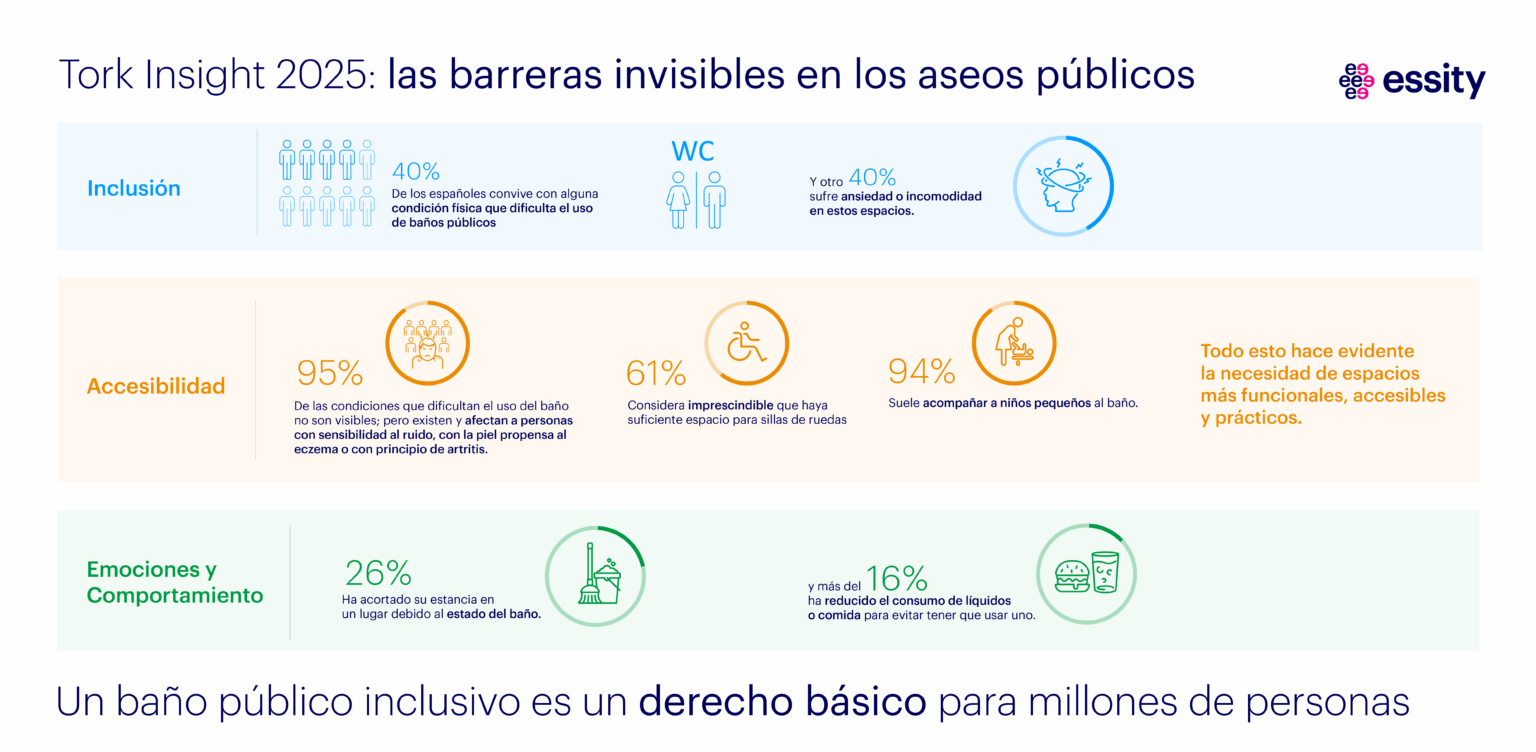Sure! Here’s the translation into American English:
—
A recent study conducted by Essity, titled Tork Insight 2025, has highlighted the existence of invisible barriers affecting access to public restrooms in Spain. According to the data, a concerning 95% of the conditions that complicate the use of these spaces are not visible at first glance. These barriers are caused by physical or emotional conditions that, although not externally manifested, significantly affect the user experience.
The study reveals that 40% of Spaniards live with a condition that hinders their use of these facilities, and another 40% experience anxiety or discomfort in shared spaces. This situation underscores the urgent need to address both accessibility and inclusion in the design and management of public restrooms. Additionally, negative experiences in these places can lead to feelings of disgust and disappointment, with 31% of respondents acknowledging they have had a negative experience after visiting a public restroom.
Regarding accessibility, the study indicates that 61% of respondents consider it essential to have enough space for wheelchairs, while 94% mention they usually accompany young children to the restroom. These figures highlight the urgent need to create more functional facilities that cater to various needs, both individual and family-oriented.
The report also emphasizes the critical hygiene situation in public restrooms; only one in five locations meets cleanliness expectations. This has led 50% of respondents to avoid using these spaces, a problem that also affects cleaning staff, who often work without the proper tools and face physical issues and mental stress.
Rainer Rossmaier, Vice President of Professional Hygiene at Essity, states that “public restrooms are not just a functional service; they reflect our values as a society.” Rossmaier emphasizes that improving accessibility and comfort in these spaces is not just a matter of infrastructure but also of dignity and mental health.
Maite San Saturnino, a psychologist and emotional well-being expert, adds that “public restrooms are intimate spaces in shared environments,” and their design should consider not only functionality but also the emotional impact on users. San Saturnino concludes that creating more inclusive environments can enhance people’s emotional quality of life, preventing isolation and promoting greater social inclusion.
This study, which has gathered data from 11,500 individuals across various countries, including Spain, underscores the urgent need to reflect on how public restrooms are managed and designed in the country. With accessibility and public health at the center of social debate, the importance of having inclusive restrooms is established as a fundamental right for millions of people.
via: MiMub in Spanish
